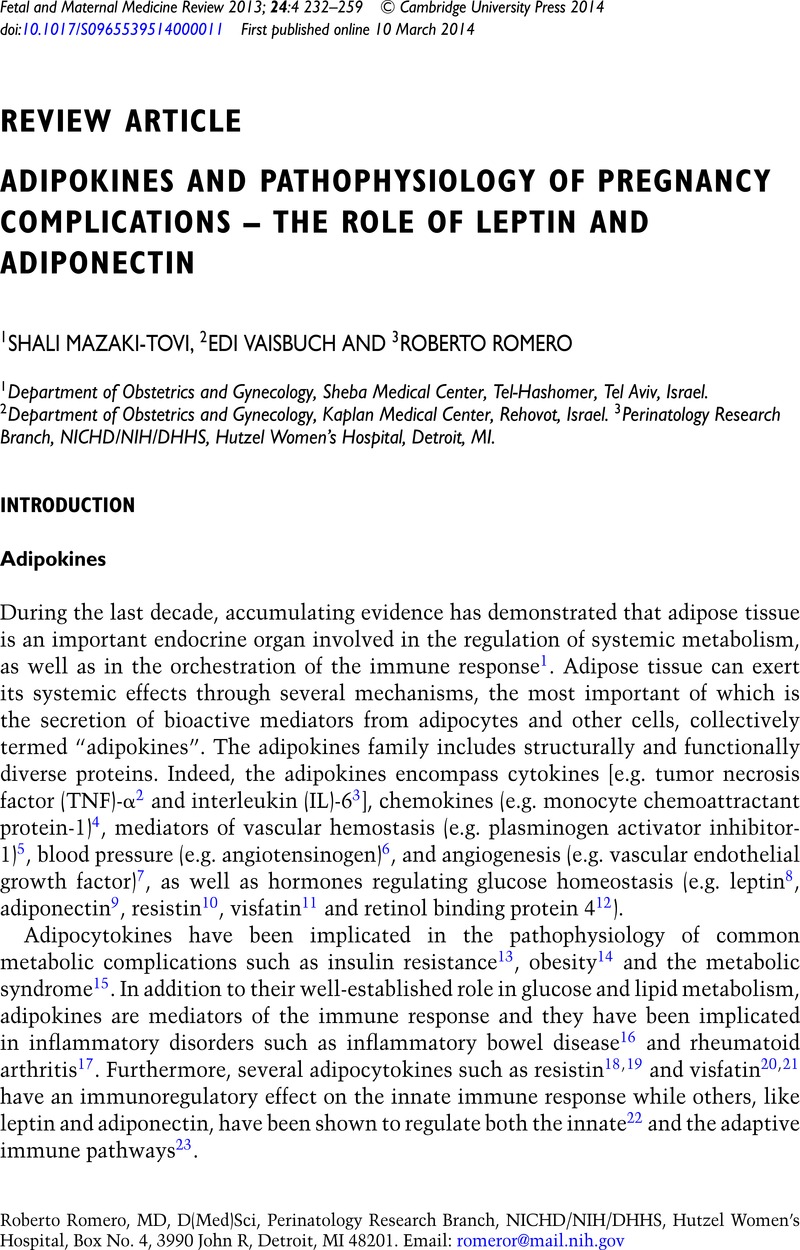Crossref Citations
This article has been cited by the following publications. This list is generated based on data provided by Crossref.
Pavlova, Tereza
Zlamal, Filip
Tomandl, Josef
Hodicka, Zuzana
Gulati, Sumeet
and
Bienertova-Vasku, Julie
2018.
Irisin Maternal Plasma and Cord Blood Levels in Mothers with Spontaneous Preterm and Term Delivery.
Disease Markers,
Vol. 2018,
Issue. ,
p.
1.
Šplíchal, Zbyněk
Zlámal, Filip
Máchal, Jan
Lipková, Jolana
Pavlová, Tereza
Hodická, Zuzana
Ventruba, Pavel
Vašků, Anna
and
Bienertová-Vašků, Julie
2018.
Comparison of maternal omentin-1 levels and genetic variability between spontaneous term and preterm births.
The Journal of Maternal-Fetal & Neonatal Medicine,
Vol. 31,
Issue. 13,
p.
1689.
Nguyen-Ngo, Caitlyn
Jayabalan, Nanthini
Haghvirdizadeh, Polin
Salomon, Carlos
and
Lappas, Martha
2020.
Role of adipose tissue in regulating fetal growth in gestational diabetes mellitus.
Placenta,
Vol. 102,
Issue. ,
p.
39.
Ezeigwe, Angelica
Ogunmoroti, Oluseye
Minhas, Anum S.
Rodriguez, Carla P.
Kazzi, Brigitte
Fashanu, Oluwaseun E.
Osibogun, Olatokunbo
Kovell, Lara C.
Harrington, Colleen M.
and
Michos, Erin D.
2022.
Association between parity and markers of inflammation: The multi-ethnic study of atherosclerosis.
Frontiers in Cardiovascular Medicine,
Vol. 9,
Issue. ,
Wong, Nathan D.
Budoff, Matthew J.
Ferdinand, Keith
Graham, Ian M.
Michos, Erin D.
Reddy, Tina
Shapiro, Michael D.
and
Toth, Peter P.
2022.
Atherosclerotic cardiovascular disease risk assessment: An American Society for Preventive Cardiology clinical practice statement.
American Journal of Preventive Cardiology,
Vol. 10,
Issue. ,
p.
100335.
Quesada, Odayme
Scantlebury, Dawn C.
Briller, Joan E.
Michos, Erin D.
and
Aggarwal, Niti R.
2023.
Markers of Cardiovascular Risk Associated with Pregnancy.
Current Cardiology Reports,
Vol. 25,
Issue. 2,
p.
77.





